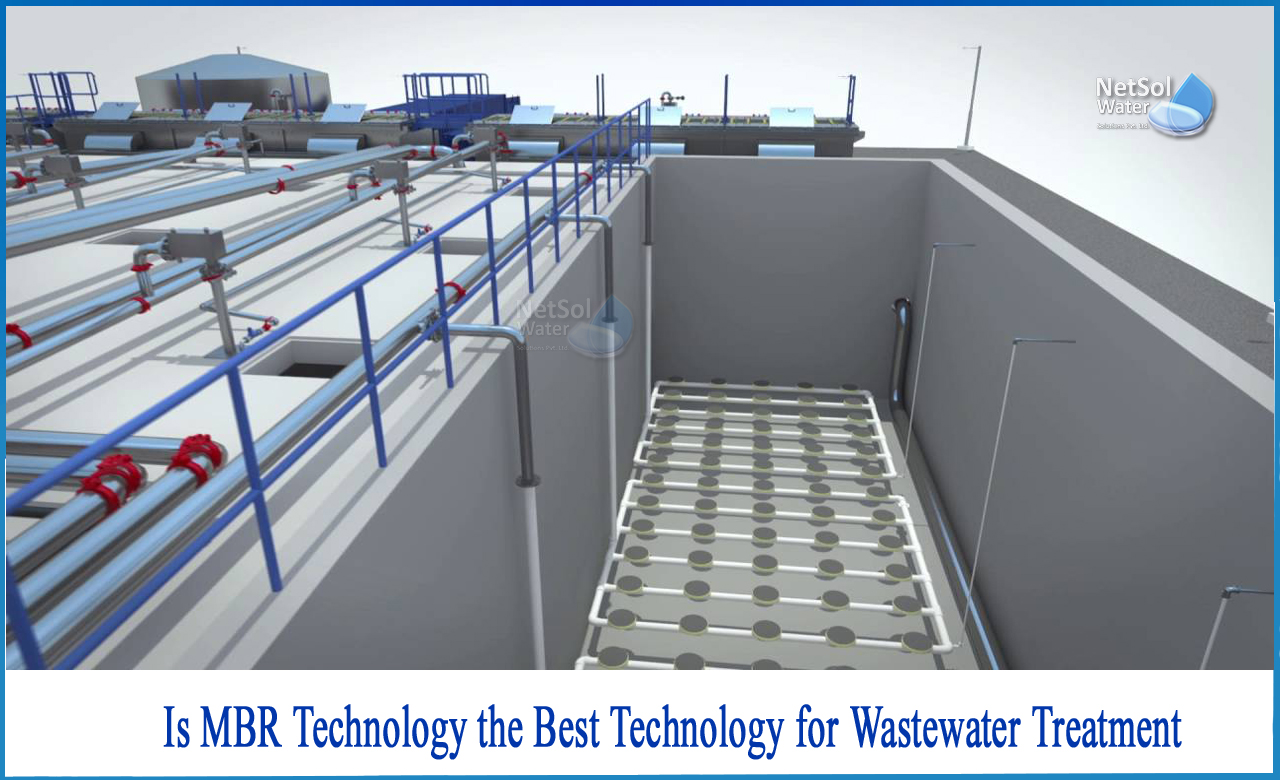Is MBR technology the best technology for Wastewater Treatment?
These are the questions that may arise in your minds! Let us help you to answer some of them!
In this article we will explain about MBRs, its major benefit for wastewater treatment applications and explore how MBR technology is best fit for your wastewater treatment needs!
An introduction to MBRs
The membrane bioreactor (MBR) has developed as a cost-effective and compact wastewater treatment device for municipal and industrial applications.
Membrane bioreactors combine a suspended growth biological treatment technology, such as activated sludge, with membrane filtration equipment, such as Reverse Osmosis, low-pressure microfiltration (MF) or ultrafiltration (UF) membranes, for wastewater treatment. The membranes are utilized to separate solids from liquids, which is a crucial function. Secondary and tertiary clarifiers, as well as tertiary filtering, have typically been used in activated sludge plants to accomplish this.
MBR operation and maintenance
Membrane fouling and membrane channel clogging are the major causes of permeability loss in MBRs. The breakdown of membrane components is one of the major costs associated with MBR.
Fouling occurs when dissolved, colloidal, or fine particles clog the membrane pores. Physical and chemical cleaning processes often eliminate it. The aggregation of bulk materials within or at the entry to the membrane channels is referred to as clogging. Membranes in municipal WWT can become blocked with aggregated filamentous matter on occasion (specifically textile fibers such as cotton wool).
The operation and maintenance of MBR units necessitates a somewhat high level of effort. Physical and/or chemical modifications are required daily for these units.
Types of MBR:
Internally configured membrane bioreactors and externally configured membrane bioreactors are the two types of membrane bioreactors.
1. Internally configured membrane bioreactors: The filtering element is put in the primary bioreactor or in a separate but connected tank in internal or submerged bioreactors. Flat, tubular, or a mix of membranes can be used. A backwash system can be used to decrease fouling by pumping membrane permeate back through the membrane. Side stream membrane bioreactors consume more energy than submerged membrane bioreactors.
2. Externally configured membrane bioreactors: The filtering element is located externally to the reactor, commonly in a plant room, in external or side stream bioreactors. The membranes can be cleaned and soaked in place using a cleaning apparatus that has been fitted.
Fields of Application
Food, pharmaceutical, paper and pulp, landfill, textile, and meat industries are some of the examples for which MBR has been successfully applied to treat high-strength wastewaters.
MBRs have been used to treat wastewater in a variety of industries, including:
1. Foods and beverages with a high organic content;
2. Exploration, refining, and petrochemical sectors of the petroleum industry;
3. Pharmaceutical business;
4. Excessive levels of suspended particles, COD, and BOD in the pulp and paper industries;
5. Re-biodegradability, toxicity, FOG concentration, and colour of textile industry effluent;
6. Landfill leachate has a diverse range of organic and inorganic compounds, both dissolved and suspended;
7. Regulatory requirements and space constraints for ship effluents;
8. Industrial vs. municipal wastewater treatment.
Advantages of MBRs
MBRs are employed for secondary treatment of wastewater with an aim to degrade organic content and quicker solid separation. MBRs are widely regarded as a viable treatment solution when space is restricted and/or a high level of treated water quality is required.MBRs can also be used to remediate landfill leachate. It's a high-tech system that needs skilled design and operation.
The advantages of MBR include:
i) A lower footprint than a similar traditional active sludge facility with secondary clarifiers and medium tertiary filtering, which is typically 30-50 percent smaller;
ii) Outstanding effluent quality that meets the most demanding water quality regulations;
iii) A modular design that provides for easy expansion and configuration flexibility;
iv) A stable and dependable operation with less disinfection requirements downstream;
v) Achieves rapid solid separation;
vi) Higher SRT encourages the growth of slower-growing microorganisms, particularly nitrifiers, resulting in better overall bio-treatment. Because of this, MBRs are particularly successful in biologically removing ammonia.
What can we offer?
Netsol Water is one of the leading water and wastewater treatment company in India offering projects and services in the field of water and wastewater treatment plant manufacturing and supplying machines like MBR, which not only turns your wastewater into usable water but also acts as a savior of Mother earth and its precious resource “water”.
Netsol Water is Greater Noida-based leading water & wastewater treatment plant manufacturer. We are industry's most demanding company based on client review and work quality. We are known as best commercial RO plant manufacturers, industrial RO plant manufacturer, sewage treatment plant manufacturer, Water Softener Plant Manufacturers and effluent treatment plant manufacturers. Apart from this 24x7 customer support is our USP. Call on +91-9650608473, or write us at enquiry@netsolwater.com for any support, inquiry or product-purchase related query.



